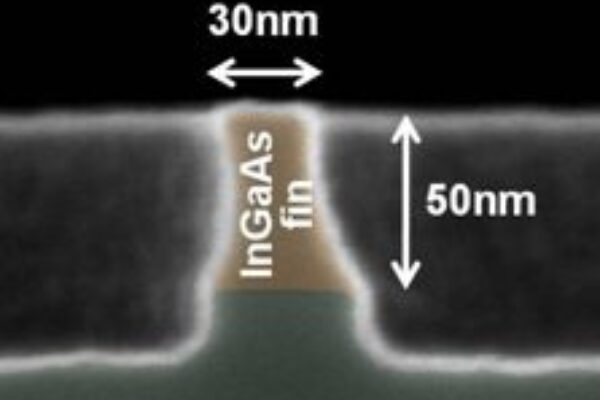
The authorship team will include Welsh wafer supplier IQE plc (Cardiff, Wales). The full program is due to be published towards the end of September.Intel (Santa Clara, Calif.) has caused a stir the semiconductor industry with the introduction of its tri-gate, or FinFET, technology as part of its 22-nm CMOS silicon manufacturing process technology offering.
Intel is the first company to do so with others, such as TSMC and Samsung looking to do so at 14-nm.At IEDM Intel plans to show the way again with a compound semiconductor version that promises faster transistors than silicon. Intel technical executives have in the past tipped InGaAs, possibly embedded on silicon for ease of manufacturing and to carry non-critical circuitry as a way forward for the semiconductor industry. Intel Fellow Paolo Gargini has proposed the integration of an InGaAs quantum-well FET with a high-K dielectric gate stack. (see Intel’s Gargini pushes III-V-on-silicon as 2015 transistor option).
Radosavljevic’s IEDM presentation on InGaAs FinFET devices with improved electrostatic performance, due to the fin shape, looks set to be in-line with that proposal. However, until now, though, the best performing III-V MOSFETs have been planar types, scaled to 10-nm gate lengths and with ultra-thin-bodies.
Two key metrics are sub-threshold slope (the steeper it is, the more abruptly the device can switch) and drain-induced barrier lowering, or DIBL (the smaller it is, the less sensitive the device is to drain voltage and the more efficiently it can turn off). Long-channel devices exhibited a subthreshold slope of 66 mV/decade, close to the theoretical minimum of 60 mV/decade, while DIBL of short gate length devices was significantly improved over best-in-class planar III-V MOS devices. The better electrostatics of these devices comes from their narrow fin width and high-quality high-k gate dielectric.

 If you enjoyed this article, you will like the following ones: don't miss them by subscribing to :
eeNews on Google News
If you enjoyed this article, you will like the following ones: don't miss them by subscribing to :
eeNews on Google News


